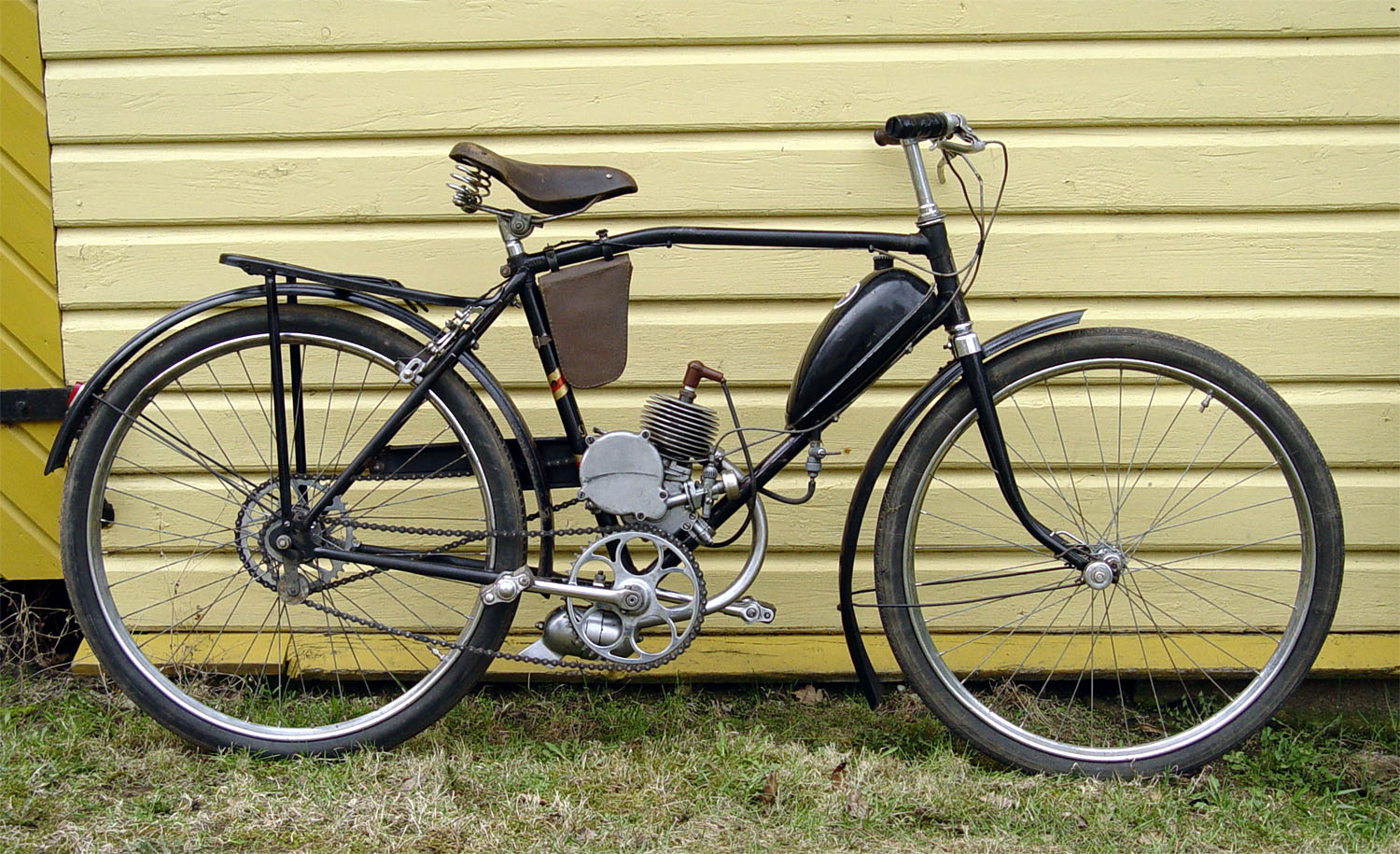Motorised Bicycles
The 1950s represented an era of extensive spread of motorised bicycles in Estonia. In Western Europe these vehicles had reached golden era a little earlier – immediately after the war – and began to lose popularity by the second half of the 1950s (beginning of mass production of D-engine here).
 Despite small engines, suitable for mounting on bicycles were to certain extent available in Estonia already in the 1920s-30s (ILO F60 mounted on mid-frame or rack, ÖWA made in one piece with front wheel hub, and other models), they were put to greater use only in the 1950s.
Despite small engines, suitable for mounting on bicycles were to certain extent available in Estonia already in the 1920s-30s (ILO F60 mounted on mid-frame or rack, ÖWA made in one piece with front wheel hub, and other models), they were put to greater use only in the 1950s.
In the early 1950s, Soviet Union imported several batches of East-German MAW-engines (copies of pre-war Victoria engine), which were attached to the fork next to the rear wheel. They reached also to Estonia which were in these times annexed by the Soviet Union.. At that time, the Soviet manufactories made Irtysh-engines (copies of pre-war German ILO F48), mounted beneath the frame, which drove the rear wheel with rubber roll affecting the tire. However, due to muddy roads, such drive system was rather inefficient here in Estonia (and probably in all Soviet Union) and worked only in perfectly dry weather, especially in rural areas (with a lot of unpaved roads).
In 1957, Leningrad factory started mass production of D4-engines, attached to the frame. This engine type became highly popular in a short while – due to both successful structure and mass production volume. When mounted on the frame of an ordinary bicycle, this engine shook the rider a lot, due to lack of suspension and narrow tyres, and thus such bikes quickly became popularly known here as leg’s shaker (in Estonian - sääreväristaja), which remained a general name for vehicles with D-engine until the 1980s-90s (until the end of the Soviet period).
The first D4 engines were intended for regular bikes, but in the late 1950s, the same engines were mounted on slightly reinforced bicycle frame in the factory, and sold as readily assembled vehicles. The bicycles with 28" wheels were substituted by bikes with 26" wheels and wider tyres, front fork gained suspension (up or down, depending on models), frame became lower, etc. Such models B-901 and B-902 were commonly made in various Soviet factories in the turn of the 1950s-60s. In Riga factory, a predecessor of such model was made, Riga-18 (which actually consisted in Riga-16 with D4 engine and a few differences in the frame). Mass production of special motorised bicycle Gauja (with suitable structure and successful streamlined design) started in the early 1960s. In 1961, mass production of Gaujas ended the manufacture of traditional bicycles in Riga factory – in the planned economy driven Soviet Union it was decided that Latvia with much more advanced and Western history should only focus on more complex products, and that regular bikes can also be made in other factories in the Soviet Union.
At the late 1960s, the "leg’s shakers" had even thicker wheels and stronger frames, thus looking more like mopeds than bicycles – thus this period can be considered the end of the era of power-assisted bicycles.

